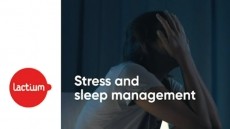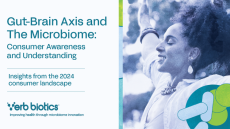Dispatches from Nutracon, Anaheim
Formulating the perfect cognitive health beverage: Feed your mind, don’t confuse it further

Speaking at the Nutracon conference in Anaheim yesterday, Nawgan founder Dr Rob Paul said the formula of many brain health drinks left a lot to be desired.
You’ll get two ingredients that work in opposite directions
He added: “There is often an unclear theoretical process underpinning ingredient selections in these products, so you’ll get two ingredients that work in opposite directions, such as gamma-aminobutyric acid [which relaxes people] and caffeine [which stimulates them].
“Or you will sometimes see so many different ingredients that you wonder how they are all interacting – you end up with complete confusion over the mechanism of action.
“In other cases, the ingredients are OK, but the dosages are not grounded in science – either they are using nowhere near enough or in some cases using hyper doses.”
One product on the market notes on its website that ‘you cannot make an effective cognitive drink on 300 milligrams’, he said. “But it all depends what the ingredient is. What matters is getting the dose right.”
Gingko biloba evidence a mixed bag on brain benefits
Meanwhile, the science behind many ingredients established in the market as memory aides was mixed, he said.
Gingko biloba was a prime example, he said, citing a 2007 meta-analysis of 15 randomized controlled clinical studies on gingko biloba supplementation finding “no convincing evidence from randomized clinical trials for a robust positive effect of G. biloba ingestion upon any aspect of cognitive function in healthy young people”.
A large NIH-backed study published in JAMA the following year also found gingko was not effective in reducing the incidence of dementia and Alzheimer’s disease in healthy older people or those with mild cognitive impairment, he said.
However, a study published last year in Evidence Based Complementary and Alternative Medicine suggested it might have some benefits on working memory in health adults, he acknowledged.
Ingredient to watch: ‘Exciting’ Magnesium-L-threonate
As for ingredients to watch, top of the list were probably the long chain omega-3 fatty acid DHA plus patent-pending magnesium compound magnesium-L-threonate (available from AIDP as the branded ingredient Magtein), he said.
Magtein – which hit the headlines in 2010 following the publication of a rat study by scientists at MIT published in Neuron – was “very exciting”, although it would be important to see how human studies panned out before making any wild predictions, he said.
“The fact that it appears to increase synaptic density is very exciting – but we will have to be patient and wait until results of the human studies are published before jumping in with products.”
Nawgan: We wanted to do it right
As for Dr Paul’s own brain health beverage Nawgan, a second clinical study was just getting started, he said.
“It’s a 28-day crossover study looking at a lot of the same measures as the first trial, but it’s longer.”
Nawgan, which was launched in 2010 in Missouri and is now available in Illinois and Florida, contains citicoline (a combination of choline and cytidine); Alpha-GPC (Alpha-glyceryl phosphoryl choline – claimed to increase acetylcholine in the brain); lycopene; caffeine (100mg); and natural vitamin E.
The beverage is “more about alertness than memory per se”, although it was “developed to provide both long-term and short-term benefits to brain function,”Dr Paul told NutraIngredients-USA earlier this year.
“The key with Nawgan is that we have included ingredients that are selective in how they function, rather than a ‘kitchen-sink’ approach to product formulation.”
Benefits without the noise
While Nawgan might compete with coffee or energy drinks such as Red Bull, consumers and retail buyers were starting to seek out products that did not have unwanted side effects from ingredients such as taurine and guarana, he said.
“Buyers recognize that Nawgan provides alertness and overall brain health without negative consequences - high sugar, ingredients that make their heart race or skin flush.
“Energy drinks are about mental and physical effects. You get the mental effect from the caffeine and the physical effect from things like taurine. But while taurine might make you feel different, it doesn’t make you perform better, which is what a lot of people want.”
He added: “We are trying to do it right with Nawgan. It’s about getting the benefit without the noise."
“Before I started the company I saw products on the market that had some decent ingredients in them, but the doses weren’t right, or the packaging meant the ingredients weren’t likely to be stable and effective throughout the shelf-life.
“It really made me want to get out there and do it right, to start with the science.”
Alertness and concentration
Unlike many products in the cognitive function market, claims made by Nawgan were supported by research on the end product rather than extrapolations based on literature about individual ingredients, said Dr Paul.
“There are a number of brands that over-promise brain functional benefits. Our packaging references alertness and concentration as functional benefits of Nawgan as in our clinical trial* individuals were able to identify subjective improvements in alertness that coincided with the improvements in quantitative EEG results."
Cognizin – the branded citicoline used in Nawgan – is produced by Kyowa Hakko (a unit of Japan's Kirin Holdings), and contains a combination of choline and cytidine.
* The trial was conducted by Dr Steven Bruce, associate professor at the Dept of Psychology at the University of Missouri and published online in November 2011 in the International Journal of Food Sciences and Nutrition.
















